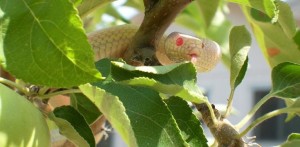
“In September this year, the city asked the public to report any rinkhals sightings that they may have had in the past decade, in order to assist the biodiversity management branch in their research into this important species.
“From the tremendous response from the public it has become clear that the rinkhals is, in fact, still present in parts of Cape Town and its surrounds, albeit in relatively low numbers,” the city’s communications department said in a statement on Friday.
The rinkhals, sometimes called the ring-necked spitting cobra, gets its name from several distinctive crossbars on its neck. These can clearly be seen when the snake rises up and spreads its hood. Rinkhals can spray their venom up to 2.5 metres.
The city said rinkhals had been sighted in areas such as Somerset West and Gordon’s Bay, “which confirms their existence within the metropolitan boundary”.
Additional evidence suggested there might be populations in areas of the Cape Peninsula.
“A number of sightings have been received from areas in and around the Table Mountain National Park, and north along the West Coast towards Mamre.
“These records, although accurate in description, have yet to be confirmed through photographic evidence,” it said.
The city has called on residents to report sightings.
“Capetonians are requested to continue to support the research by forwarding any further rinkhals sightings, preferably with photographs and GPS co-ordinates,” it said.








